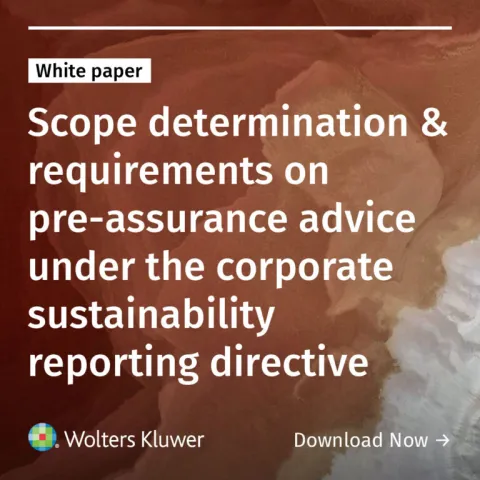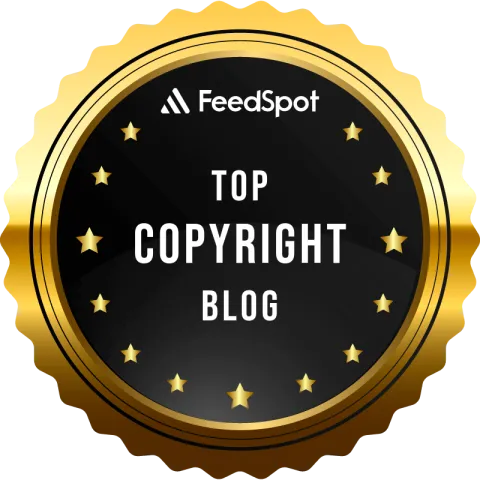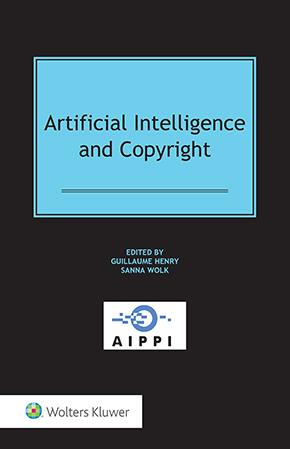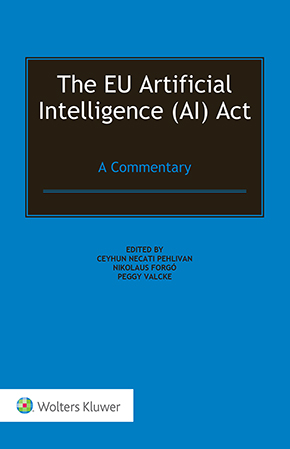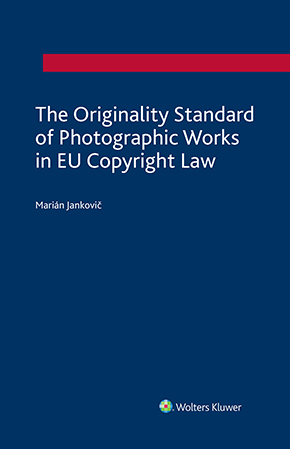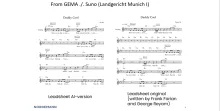The Media Pluralism Paradox: Rethinking Exclusive Rights for News Publishers in the Rise of AI Search
November 24, 2025
As the EU continues to wrestle with large-scale unauthorised use of works in AI training and outputs, the rapid convergence of search and AI answers is further complicating an already lagging copyright debate. On 7 October 2025, Google began rolling out “AI Mode” across Europe – a generative-AI search experience that provides conversational answers beyond a list of links. It builds on “AI Overviews”, the summaries shown at the top of results with prominent source links. Although “Google-Extended” lets sites opt out of certain model training, it does not prevent AI Overviews. In practice, publishers who want to stay out of those summaries must use search controls that suppress or limit snippets across Google surfaces without fully de-indexing – albeit at the cost of visibility.
From a copyright angle, the key issues are the scope of the Directive on Copyright in the Digital Single Market (CDSM Directive) text-and-data-mining exceptions and opt-out (Articles 3–4). These provisions primarily concern training and indexing, and the question is whether they extend to the use of generative AI to produce search summaries. A second pillar is the press publishers’ neighbouring right in Article 15. But it excludes acts of hyperlinking and the use of “individual words or very short extracts”, which narrows the right’s reach over short AI-generated snippets linking to multiple content sources.
In July 2025, signalling limited confidence in copyright remedies alone, the Independent Publishers Alliance filed a complaint with the European Commission under the Digital Markets Act (DMA) against Google’s AI Overviews. Alphabet (Google), designated a gatekeeper for online search, is alleged to divert traffic and impose unfair terms by denying a meaningful opt-out. If substantiated, the conduct could fall under Article 6(5) DMA (self-preferencing in ranking and related indexing/crawling) and raise issues under Article 6(12) DMA (FRAND access terms) where continued indexing is conditioned on allowing ingestion for AI Overviews.
Over the last decade, EU policy on news media versus digital intermediaries has shifted from a primarily copyright lens to one that also includes antitrust remedies, motivated by concerns over media sustainability, pluralism, and quality – all of which are linked to the publishing industry’s ability to recoup its investments (see CDSM Directive Recitals 54–55). Policymakers have thus assumed that media pluralism can be achieved, or at least facilitated, by strengthening copyright protection. After all, news is not just another consumer product. In EU law, media freedom and pluralism, and the right to receive and impart information, are enshrined in Article 11 of the Charter of Fundamental Rights. But here is the question: how much can copyright law actually do for media pluralism?
Media pluralism or media profitability?
What, exactly, is “media pluralism”? EU monitoring frameworks focus on diversity of ownership, content, and viewpoints, along with access and representation – not publisher profitability per se. Economic and technological pressures can still distort that diversity. Advertising, once the default cross-subsidy for broad access, has been reshaped by digital markets in which a few platforms command the key adtech infrastructure and demand. As a result, ad-funded models now appear structurally weaker for many newsrooms than they did decades ago, even before accounting for the negative effects of traffic pressure. Policy foresight notes rising pressure to publish faster and “softer” (entertainment/infotainment) content, leaving less room for investigative journalism. Paywalls may not benefit pluralism either, as they hinder access to information – especially for groups who are unwilling or unable to pay – precisely where pluralism requires breadth. Long-term subscribers tend to be male, older, higher-income, and better educated, which risks skewing supply towards the preferences of a relatively narrow audience.
So where does that leave copyright? Copyright can support incentives to invest and create in journalism, but stronger exclusivity often pulls against pluralism. If robust enforcement mainly expands paid access to high-quality reporting, it may raise access barriers. A policy mix centred solely on making current business models profitable risks missing the pluralism goal.
From news aggregators to AI-powered search
Proposed in 2016, Article 15 of the CDSM Directive was the EU’s answer to publisher–intermediary tensions at a time when news aggregators were the main concern. Scholarly analysis indicates that transposition of Article 15 has struggled to deliver bargaining power or cash across Member States. France’s early experience showed Google could sidestep Article 15 by switching to an opt-in display of previews; only competition measures brought it to the table – highlighting that the right, by itself, cannot compel negotiation or payment. Pre-CDSM measures in Germany and Spain also fell short: Google required free-licence opt-ins for snippets in Germany and shut Google News in Spain, underscoring publishers’ weak bargaining power. The implementation record reinforces the core critique that Article 15 imposes no duty to bargain or remunerate. Given this history, authorities may wish to review earlier measures, before relying on them to empower publishers in the generative-AI era.
Australia, by contrast, has seen more success with its News Media Bargaining Code (2021). It is a bargaining framework outside copyright that requires designated platforms to negotiate and, if needed, enter final-offer arbitration over remuneration for “making available” covered news content – language that expressly reaches crawling, indexing, making available, and distributing. The policy directly targets bargaining power imbalance, rather than expanding exclusive rights.
As with the aggregator era, opt-outs from generative-AI training and outputs risk weak leverage. Reports suggest Google has resisted publisher-friendly, fine-grained opt-outs for AI search; if publishers collectively opt out of summaries, Google can still surface other sources and users may keep relying on AI Overviews – much as users in Spain simply lost a familiar entry point when Google News exited.
What about traffic effects? The evidence is unsettled. Publishers in several EU states now allege diversion from their sites due to AI Overviews. Google, by contrast, claims Overviews surface more diverse links and yield higher-quality clicks; Search Console folds traffic from AI features into overall “Web” reporting, complicating one-to-one attribution. The links often deep-link with text fragments, which can speed users to the relevant passage and may help some sources while cannibalising others. Some of the “lost” visits may simply reflect better-targeted search, namely a shift from inefficient browsing to more precise routing that naturally cannibalises lower-relevance pages rather than the sources users actually seek. Until there is robust, independent measurement, broad claims of systematic traffic theft or guaranteed gains are premature.
The broader lesson from the last decade still applies: strengthening exclusivity rarely fixes an underlying bargaining imbalance with a dominant intermediary. Where policymakers want deals to happen on fair terms, process-based tools are crucial. They include a duty to negotiate, non-discrimination over crawling, indexing and ranking, transparent metrics, and arbitration backstops. These are preferable to additional neighbouring rights or blunt opt-outs. The opt-out mechanism can even create a lose-lose-lose outcome: it may stifle AI innovation, reduce visibility and thus profitability for publishers, and shrink the diversity of news available to consumers.
Bottom line for media pluralism in the AI future
Generative AI will increasingly function less as a competitor to news publishers and more as a downstream distribution channel for their content. Audiences will likely segment by use, with some wanting concise summaries and others the full article. The EU should plan for a landscape in which news is routinely accessed through AI-powered tools. AI chatbots and AI-enhanced search are emerging as gateways to news, especially for younger audiences. Properly implemented, AI systems can promote pluralism by meeting niche demand that is not commercially viable, enabling cheaper, decentralised distribution, and lowering barriers to information discovery. The win-win lies in deeper, fairly compensated integration of quality content into AI ecosystems, not exclusion.
News has an inherent advantage over other content: AI models cannot report new events without fresh, human-gathered inputs. AI-powered search therefore depends structurally on original reporting. That dependence does not automatically translate into fair payment, partly because data scraping can generate a negative externality stemming from free-riding on limited human-produced content. Short-term pressure to secure training inputs leads developers to ignore the long-term risk of content exhaustion caused by over-harvesting.
If the aim is to let publishers recoup investment, policy options need not rely solely on one-off private deals. In addition to the mandatory bargaining regime, European countries could use or expand public-service funding to support independent journalism – for example, Germany’s “Rundfunkbeitrag”, which finances public broadcasters via a universal fee. A tailored statutory mechanism for news (for example, a collective scheme or levy administered by accredited CMOs) could back media diversity beyond traditional newsrooms, including smaller providers like community media and local advocacy organisations.
Pluralism is about diversity and access, not simply publisher profitability. Copyright still matters as the legal backbone of the private media market, but media pluralism and market functioning call for different tools. The EU’s new European Media Freedom Act (EMFA) and the Digital Services Act (DSA) both anchor policy around independence, transparency, and systemic-risk mitigation rather than pure revenue transfer. Any funding or bargaining architecture should therefore cohere with these frameworks, namely, non-discriminatory access, editorial independence, and clear metrics for impact on diversity of supply.
Photo by Manolo Chrétien on Unsplash


